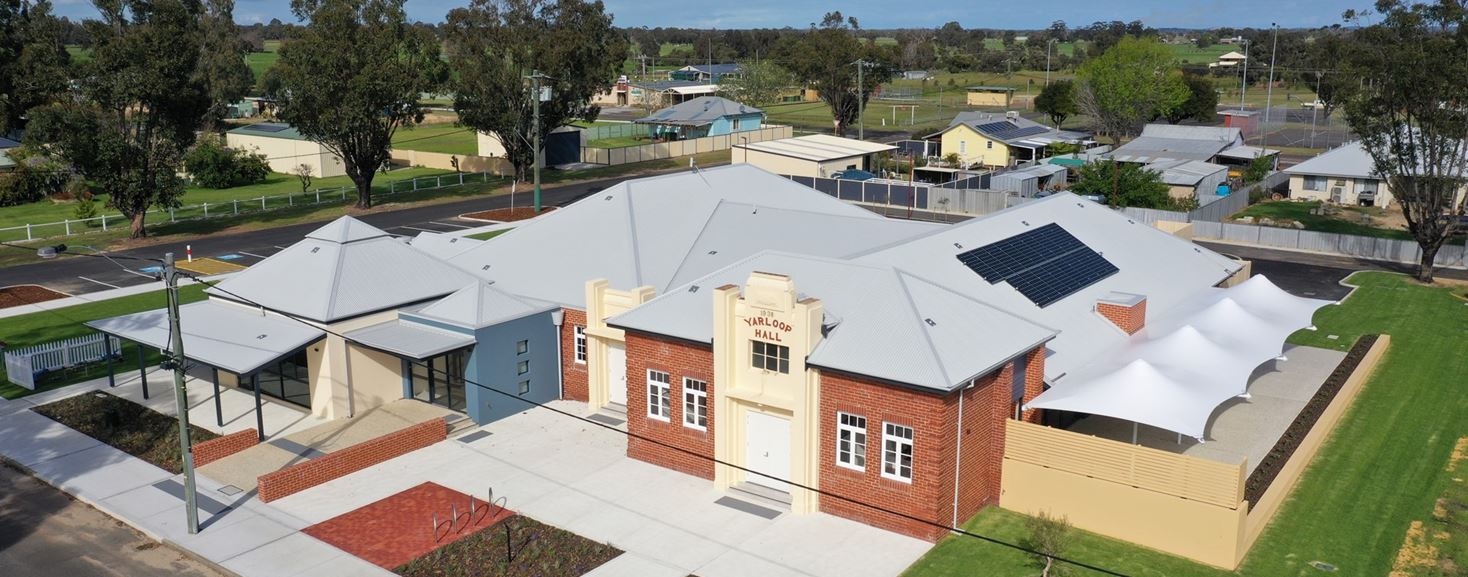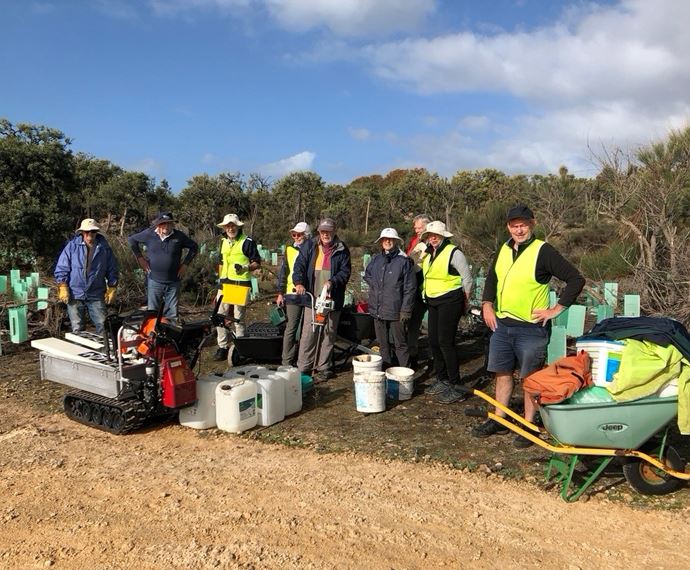Rebuilding the community following a fire
The destructive force of the changing bushfire season has had a significant impact on Western Australian communities. Over the course of 12 days from the evening of 5 January 2016, the community of Yarloop and surrounding areas of Harvey and Waroona were devastated by bush fire ignited by lightning. Yarloop especially experienced huge losses. 31,180 hectares of private property and 37,985 hectares of public land were burnt, and 181 properties were destroyed, causing $155 million in damage. Tragically two lives were lost.
To support the community to rebuild following the fire, Lotterywest provided a grant to the Shire of Harvey for the construction of a new multi-purpose community centre to replace the Town Hall and Community Resource Centre in Yarloop.
To rebuild the Yarloop Community Resource Centre, returning public services to the town and contributing to community healing and new ways of connecting.
Shire of Harvey
1/1/2018
$2,600,000
Lotterywest
$750,000
Southwest
General Community
- In the first two years since opening, the Yarloop Community Resource Centre received more than 4,600 visitors.
- Events run from the centre include community led, business development and social activities.
- The community can access health care services and hire out office space for meeting through the Community Resource Centre.
- Shire residents were engaged in the design of the Community Resource Centre, ensuring the space was purpose built for Yarloop.
- Engagement sessions provided an opportunity to bring community members together at a time when other activities were not operating.
- Creating a space for communities to connect, especially in the wake of a catastrophic event.
- Retaining heritage features that survived the fire and incorporating them into the design.
Opportunity
Bushfires have always been part of Australian life. However, due to the changing climate, Australia is experiencing longer and more dangerous bushfire seasons. According to CSIRO’s Forest Fire Danger Index (FFDI), 2019 saw the highest accumulated FFDI on record in Australia [1].
As a result of the fire, 500 Yarloop residents were displaced, having lost homes or being forced to flee, with limited access to return once the fires had been extinguished. For those who did go back, they returned to a decimated town. Vital services were difficult to access, historical buildings and community facilities were destroyed, and rebuilding was a significant task. Many made the hard decision not to return to Yarloop, which saw the town’s population drop.
Approach
Rebuilding the Yarloop Community Resource Centre was a key step in returning public services to the town and community healing. Community Resource Centres provide an important focal point for regional towns in WA, bringing people and communities together through a range of community, business, and economic development activities.
The Lotterywest grant helped fit out the new centre with a reception and foyer, function room, alfresco dining area, conference and meeting room, medical consulting room and laundry.

Impacts and outcomes
In its first two years of operation since opening in November 2019, the Yarloop Community Resource Centre has received more than 4,600 visitors. Events run from the centre are community led, business development and social activities. They include art workshops, youth groups, yoga, public forums, sundowners, cooking lessons and digital literacy classes.
“A lot of people lost their community connections, their neighbours, their friends and their support network, and this place has given people somewhere to come and build that again.”
Julie-Ann Ford, Manager Yarloop Community Resource Centre
Through the Community Resource Centre, the community is also able to access the health care services (doctor, child health nurse and breast screenings) and hire out office space for meetings.
What worked
Engaging early and often
The Shire engaged residents in the design of the Centre. This ensured the space was purpose-built for the types of activities and services most important to enable community members to stay in the town. The engagement sessions also created an opportunity to bring residents together while other activities were not operating.
“Community consultation is first and foremost, that’s at the heart of the project to make sure you build it right from the ground up.”
Paul Gillet, Shire of Harvey President
Retaining heritage elements
An effort was made to keep the heritage features that survived the fire and to incorporate these into the design. This was important for the town to remain connected to its past as it looks to the future.
Creating a hub for social connection
This project has demonstrated the need for communities to have a space to connect. The role of Community Resource Centres in WA’s regions was demonstrated as more important than ever in the wake of this catastrophic event.
“Undertaking this project made me realise how much the community really needed each other. Now they have a place they can all come together again.”
Julie-Ann Ford, Manager Yarloop Community Resource Centre
REFERENCES
- Commonwealth Scientific and Industrial Research Organisation. 2020. The 2019-20 bushfires: a CSIRO explainer. 3 February 2021. https://www.csiro.au/en/Research/Environment/Extreme-Events/Bushfire/preparing-for-climate-change/2019-20-bushfires-explainer
- Harvey (WA: Shire). 2017. Stories from the fireground: first hand accounts of the 2016 Waroona-Yarloop-Harvey Bushfire. Shire of Harvey.
Learn about wellbeing
Understand how your community is going to help you to better target and plan your project.
Ready to plan your project?
Understand your vision, plan your impact and report on the outcomes of your project with three easy interactive tools in the Community Impact Planner.
Acknowledgement of Country
The Western Australian Community Impact Hub acknowledges and pays respect to the Traditional Owners of the land on which we are based, the Whadjuk people of the Noongar Nation and extends that respect to all the Traditional Owners and Elders of this country. We recognise the significant importance of their cultural heritage, values and beliefs and how these contribute to the positive health and wellbeing of the whole community.
![Carnaby's Cockatoo Flying Over Restoration On Monjebup Reserve. Photo By Krysta Guille[1]](/media/3xkoo5ve/carnaby-s_cockatoo_flying_over_restoration_on_monjebup_reserve-_photo_by_krysta_guille-1.jpg?anchor=center&mode=crop&width=690&height=570&rnd=133053022173100000&quality=80)

